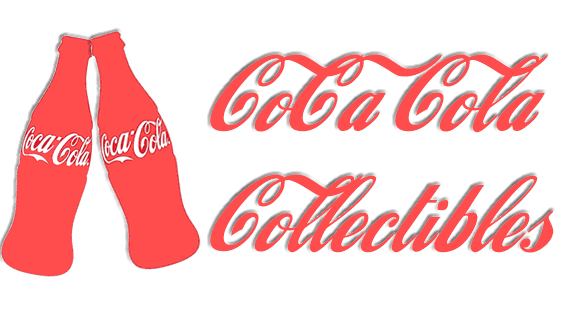Calendars alendars have been, since my first day as a collector of Coca-Cola memorabilia, my main interest. I would consider trading any tray or sign I own for a particular calendar I need. Everyone who collects and enjoys the advertising and production material of The Coca-Cola Company, even those who collect anything with that famous trademark, has an area of collecting that is most fascinating to them. Because of their beautiful artwork and colors and their rarity, calendars are the most important pieces in my collection.
Many people do not realize the importance of the calendar as a marketing tool in the days before radio or television. Of course newspaper and magazine ads and signs brought the product before the public eye, but the calendar was much more than that. It was a useful product given away to consumers with the hope that they would hang them in their homes, both to remind them of the date and that Coca-Cola was “delicious and refreshing.” It obviously worked, and worked well. The Coca-Cola Company realized this, producing at least one type of calendar every year beginning in 1891. In some cases a few different calendars were produced in one year.
During my early years of collecting, only one group of price guides on Coca-Cola collectibles was available, and the discrepancies between the calendars shown in these books and the calendars I was purchasing were very obvious. It soon became clear that many of the calendar pads shown were switched or altered in some way. Those price guides, unfortunately, are still available, showing the misdated and altered calendars. With this book, I hope to clear up those discrepancies.
Prior to 1914, the sizes of calendars were not very consistent. I have made every attempt to give correct sizes whenever possible. The size of the complete calendar (including pad), made between 1914 and 1919, is approximately 13′′ × 32′′. From 1920 to 1922, they measured 12′′ × 32′′. All of the calendars were equipped with a metal strip and hanger at the top. From 1923 to 1940, the size was approximately 12′′ × 24′′, again with metal strip and hanger. In 1926, however, the calendar changed drastically, being reduced to 10-1/2′′ × 18-5/8′′ and printed on a medium-weight card stock. It also had a hole drilled at the top for hanging (replacing the standard metal strip). In addition, the 1926 calendar was first to have a cover sheet over the pad, which said, “1926 Compliments of The Coca- Cola Co., Atlanta, GA.” The use of cover sheets over the pad didn't become standard until after 1930. Another interesting aspect of Coca-Cola calendars is the glass and bottle variations. Because of the obvious difference between fountain and bottle sales, two calendars were issued in certain years, one showing a model holding a glass and one holding a bottle. In some cases, one type of calendar may be rarer than the other, depending on how many have turned up over the years. The following is a list of calendars that have been printed in two separate versions of glass and bottle: 1904, 1908, 1914, 1915, 1916, 1917, 1919 (knitting girl), 1920, 1923, and 1927. The bottle version of the 1923 calendar is very unusual in that the bottle is embossed “8 oz.” rather than the standard “6 1/2 oz.” which is the size of the bottle used at that time. The 1927 calendar also has a slightly different variation. One calendar has a large bottle inset with a border around it on the lower lefthand side, and another has no bottle at all. There is also a glass variation on the 1928 distributor calendar. In 1918 and from 1921 to 1930 (with the exception of 1923 and 1927), calendars show both glass and bottle, and from 1931 on they show bottles only.
As any collector who actively seeks Coca-Cola calendars knows, they are not easy to find. Anything prior to 1914 is considered rare, and anything prior to 1910 is very rare. Despite the rarity of these early calendars, the value drops drastically if they are found without a pad or a sheet attached, or are trimmed from their original size.
After 1940, a major change occurred in Coca-Cola calendars. From 1941 through the 1960s, they were made as multiple-page-type calendars, usually consisting of six pages plus a cover sheet, with two months on each page.
The condition of the calendar, as with any Coca-Cola collectible, is most important in determining value. The prices you see on calendars in this book reflect examples in nice clean, presentable condition. Examples in poor condition or without a pad will certainly be worth less, and mint untouched examples could certainly be worth more.
There are a few things to keep in mind when purchasing a calendar. First, be sure that it has not been trimmed from its original size. (The measurement information provided earlier should be helpful.) The pad or sheet attached is also very important. Make sure it is the correct year for the calendar. If it is not a full pad, take note as to how many sheets are attached. One sheet attached (other than the last sheet) is acceptable as long as you realize that you are buying an altered calendar. If a calendar is trimmed or has a partial or no pad at all, or has been mounted to poster board, it can't be called mint.
In this section of the book, you will find the most complete collection of Coca-Cola calendars ever assembled, including stock calendars, foreign, and small size “home” or “reference” calendars, all of which are very interesting. Very few calendars known to exist are absent from this publication. Whether you are a diehard calendar collector like me or have just a few in your collection, I hope you'll agree that calendars are among the most beautiful of all Coca-Cola collectibles.
